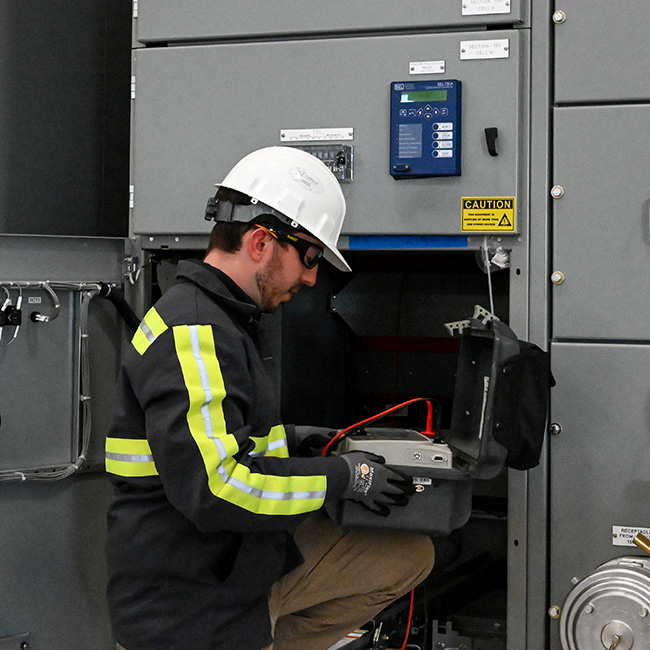Case Study:
Low and Medium Voltage Switchgear Testing
Acceptance Testing of Medium and Low Voltage Switchgear and Transformers for Research Datacenter
Objective
- Perform acceptance testing of medium and low voltage switchgear and transformers.
Solutions
- Identified issues with relay settings for the medium voltage switchgear.
- Identified improper arc-flash reduction settings input into breakers.
- Found protection settings not in accordance with short-circuit coordination study.
- Created detailed instructions for implementing correct settings and ensured they were implemented correctly.
- Enabled correct use of the medium voltage breaker settings arc-flash reduction mode and achieved the correct settings to meet the arcflash requirements of the short-circuit analysis performed.
Results and Benefits
- Customer did not have to de-energize equipment after initial energization.
- Customer now understands the importance of third-party acceptance testing for switchgear and transformers.
- Educated customer on our rigorous documentation process that allows them to answer any end-user questions about the equipment.

Background
The Quad Plus team was called in to perform third-party acceptance testing for medium (13,200 volts) and low voltage (480 and 208 volts) switchgear and transformers for a research facility datacenter/supercomputer.
During the electrical switchgear testing, the arc-flash reduction settings were improperly input into the breakers. The arcflash reduction settings are crucial to allow workers to safely de-energize the switchgear when performing maintenance on the board and performance of live work without the use of specialized arc-flash suites rated greater than 40 cal/cm2.
In addition, we identified issues with the relay settings for the medium voltage switchgear that prevented any of the medium voltage breakers from being shut. We also found protection settings not in accordance with the short-circuit coordination study. This is vital to the safety of personnel and equipment in the event of an arc flash, arc-blast, or another incident that would put the system outside normal operating parameters.
Quad Plus Solution
Once all the issues were identified, we created exact instructions for what settings to implement that would correct these issues. We delivered these instructions to our customer and the manufacturer who developed the settings. Under our guidance, the settings were correctly implemented, and full functionality of the switchgear was achieved.
We were also able to demonstrate to our customer how vital it is to have a third-party testing group perform these procedures to ensure that no incidents occur during the first energizations of equipment. Additionally, there was no need to de-energize the equipment after energization due to our thorough process that caught equipment and installation issues.
Trustworthy Third-Party Acceptance Testing
Acceptance testing, adjustments, and calibration are critical before new equipment is energized to ensure that all required specifications are met and quality standards achieved. Independent testing ensures your systems are operating safely while also ensuring continuous operation and avoiding downtime. Our acceptance testing strategies are developed according to NETA standards for testing devices and systems.
At Quad Plus, we understand that projects must be completed on time and on budget. Our team of NETA-certified technicians is ready to provide third-party, independent acceptance testing and deliver quick turnaround times for all testing reports. We are also available for emergency service 24 hours a day should any problems arise.
When the reliability of your system is critical, choose Quad Plus so you can be confident that your interests are protected.








